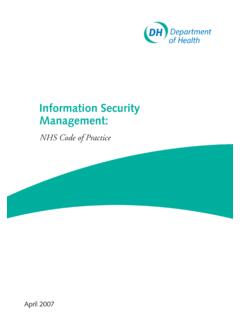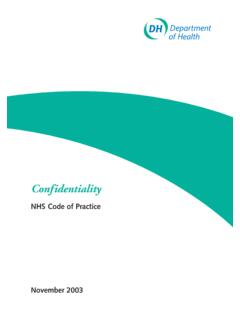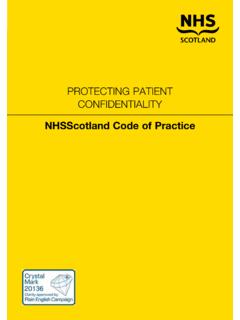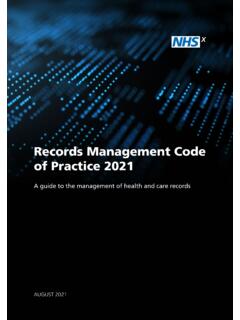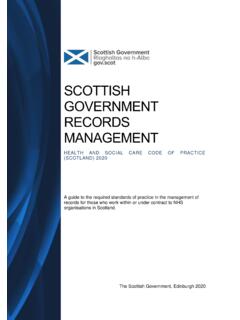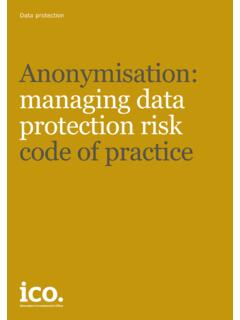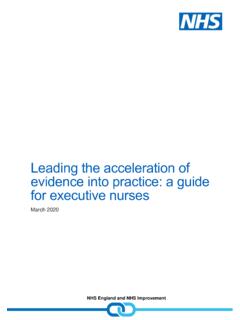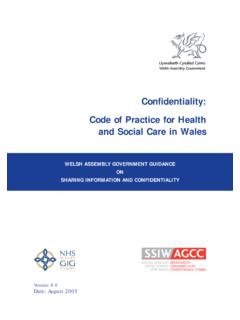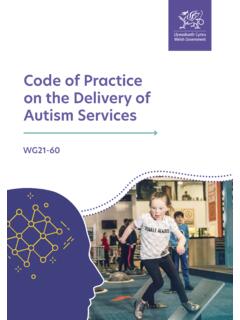Transcription of Improving identification of people with a ... - NHS England
1 Improving identification of people with a learning disability: guidance for general practice NHS England and Improvement Publishing Approval Reference: 001030. Version 1. NHS England and NHS Improvement Contents Introduction .. 2. Actions for 4. Appendix 1: List of codes that indicate a learning disability .. 7. Appendix 2: List of codes that may indicate a learning disability . 14. Appendix 3: List of outdated codes .. 20. Appendix 4: Learning disability identification check-list .. 22. 1 | Contents Introduction 1. The NHS Long Term Plan1 commits to improve uptake of the existing annual health check in primary care for people aged over 14 years with a learning disability, so that at least 75% of those eligible have a learning disability health check each year.
2 2. There is also a need to increase the number of people receiving the annual seasonal flu vaccination, given the level of avoidable mortality associated with respiratory problems. 3. In 2017/18, only of patients with a learning disability received a flu vaccination and only of patients with a learning disability received an annual learning disability health 4. In June 2019, NHS England and NHS Improvement announced a series of measures to improve coverage of annual health checks and flu vaccination for people with a learning disability. One of the commitments was to improve the quality of registers for people with a learning disability3. Clinical coding review 5. Most GP practices have developed a register of their patients known to have a learning disability.
3 This has been developed from clinical diagnoses, from information gathered from learning disabilities teams and social services and has formed the basis of registers for people with learning disability developed for the Quality and Outcomes Framework (QOF). These registers have been used to identify patients eligible for an annual seasonal flu vaccination and an annual learning disability health check. 1 2 learning-disabilities/experimental-stati stics-2017-to-2018. 3 Implementing the Long Term Plan in primary and community Services Board meetings held in Common 27th June 2019. 2 | Introduction 6. However, some coded clinical diagnoses do not automatically result in a patient being included on the register. The most common example of this is Down's Syndrome.
4 7. NHS England and NHS Improvement, working with clinical and coding experts, have undertaken a review of the diagnoses that are associated with a learning disability. We have identified clinical diagnoses that should automatically ensure a patient is included on the learning disability register. The revised list of diagnoses can be found in Appendix 1. These patients will be added automatically to the learning disability register in QOF in early 2020. 8. We have also created a list of diagnoses that may or may not be associated with a learning disability (Appendix 2). Most of these conditions are very rare and it is likely that practices will already be aware of these patients and whether or not they have a learning disability. However, practices are being asked to check that patients with a clinical diagnosis in this group have had an individual assessment to determine if they should be added to the register of people with a learning disability.
5 9. Whilst we have identified a large number of conditions and codes in Appendices 1 and 2; as most of these conditions are rare it is likely that only small numbers of new patients, will need to be added to a register. 10. This guidance sets out what practices need to do in 19/20 and 20/21 onwards in light of this review to maximise the number of patients receiving a learning disability annual health check and being protected with influenza vaccination. practices should ensure that they use the recommended codes to record this care in order to receive the relevant fees for completing this work. 3 | Introduction Actions for practices In 2019/20. 12. practices need to use the codes provided to check that all eligible patients are included on the registers for people with a learning disability and are invited for a flu vaccination and a learning disability health check.
6 Not all these codes are currently available in all general practice clinical systems, so practices should not be concerned if they are currently unavailable on their system. 13. There are two steps practices need to take in 2019/20: Step 1: Review and update the register to ensure that all patients with a clinical diagnosis associated with a learning disability are invited for a flu vaccination and a learning disability health check. 14. Appendix 1 contains a list of clinical diagnoses which are consistently associated with a learning disability. Please ensure all patients with these diagnoses are offered a flu vaccination and an annual learning disability health check, by reviewing the code list in appendix 1 and searching for affected patients. For these patients there is no need to make any changes to the coding of their condition or learning disability.
7 They will be added to the QOF. register automatically as your clinical system supplier implements V44 of the QOF business rules which will be complete in early 2020. These codes have already been added to the learning disability health check extraction from October 2019, which means that these patients can be identified by running the learning disability health check reports provided by your clinical system supplier. 15. practices should note that the code academic developmental disorder' has been removed from the register, as this is indicative of a learning difficulty rather than a learning disability. It is unlikely that many, if any, patients will have the academic developmental disorder' code in their record and be the only trigger for their inclusion in the learning disability register.
8 Any such patients should have their record reviewed as they may require recoding to ensure that they remain on the register. 4 | Actions for practices 16. practices are reminded that patients with a learning disability may require additional support or reasonable adjustments' to enable them and their carers to access health care. These should be assessed and recorded in their medical record. Step 2: Identify patients with conditions who may also have a learning disability, assess whether the patient should be added to the learning disability register and be offered a flu vaccination and annual learning disability health check. 17. Appendix 2 includes the codes for conditions which may or may not be associated with a learning disability. Not everyone with a recorded diagnosis in this list will have a learning disability, for example, not all patients with cerebral palsy have a learning disability, but these diagnoses are often associated with a learning disability.
9 18. practices need to use the code list provided to identify these patients and make an individual assessment of the patient to determine whether they should be added to the register of people with a learning disability. In some cases, this may require a face to face assessment and discussion with the patient and/or their carer. Those added to the register should be offered an annual learning disability health check and flu vaccination. 19. We suggest practices start with the most common conditions with initial assessments being made between now and March 2020. These are highlighted in grey in Appendix 2. NHS England and NHS Improvement are working with NHS Digital and all system suppliers to develop a search tool to help with this. 20. A checklist, known as an Inclusion Tool', to help clinicians to determine whether a patient would benefit from being added to the learning disability register is reproduced in Appendix 4.
10 This can also be downloaded from content/uploads/2019/08 21. After assessment and appropriate discussion with the patient and/or carer, if appropriate, the patient can be added to the register by adding the relevant code On learning disability register (finding) (SNOMED CT code 416075005). 5 | Actions for practices 22. practices should also review the use of codes listed in Appendix 3. Whilst these codes will ensure that patients are added to the registers the associated descriptions are outdated and no longer acceptable. practices are advised that the original coding should not be removed but a new code using terminology which is more acceptable to affected individuals should be added under the original date. 23. Please note that the code lists included in appendices 1 and 2 are not exhaustive and clinicians should also ensure that other patients who, in their clinical judgement, have a learning disability are added to the register.










